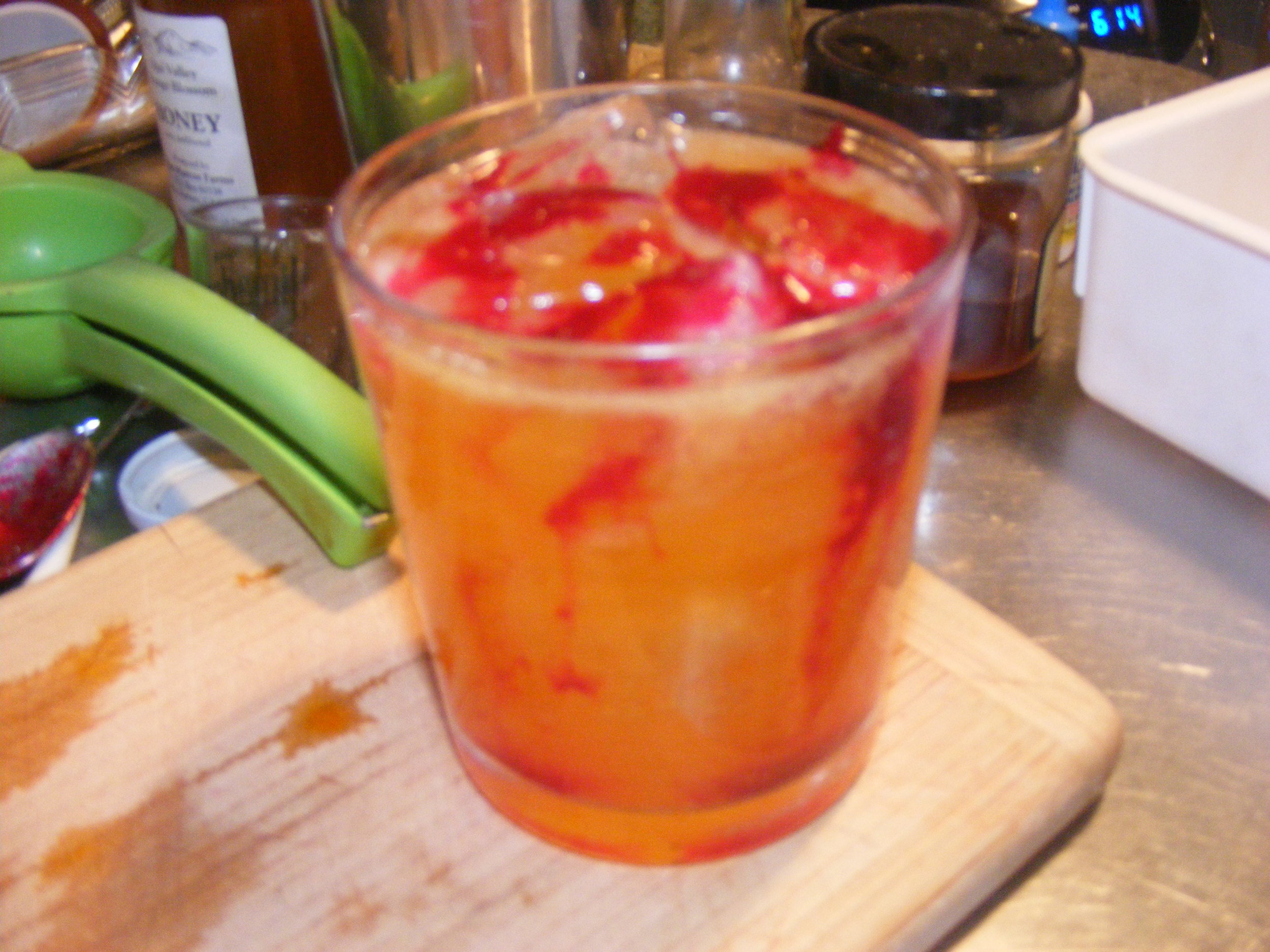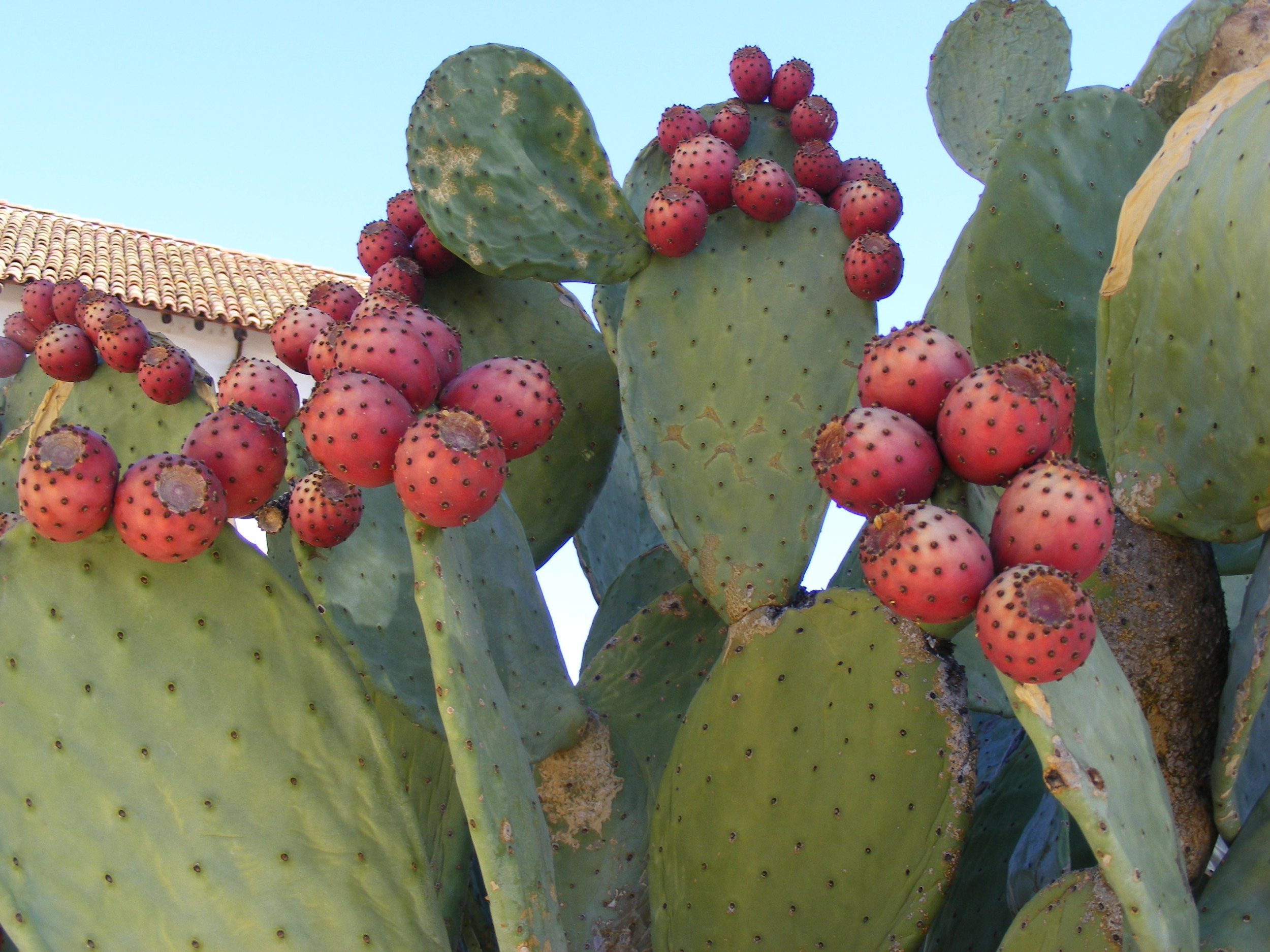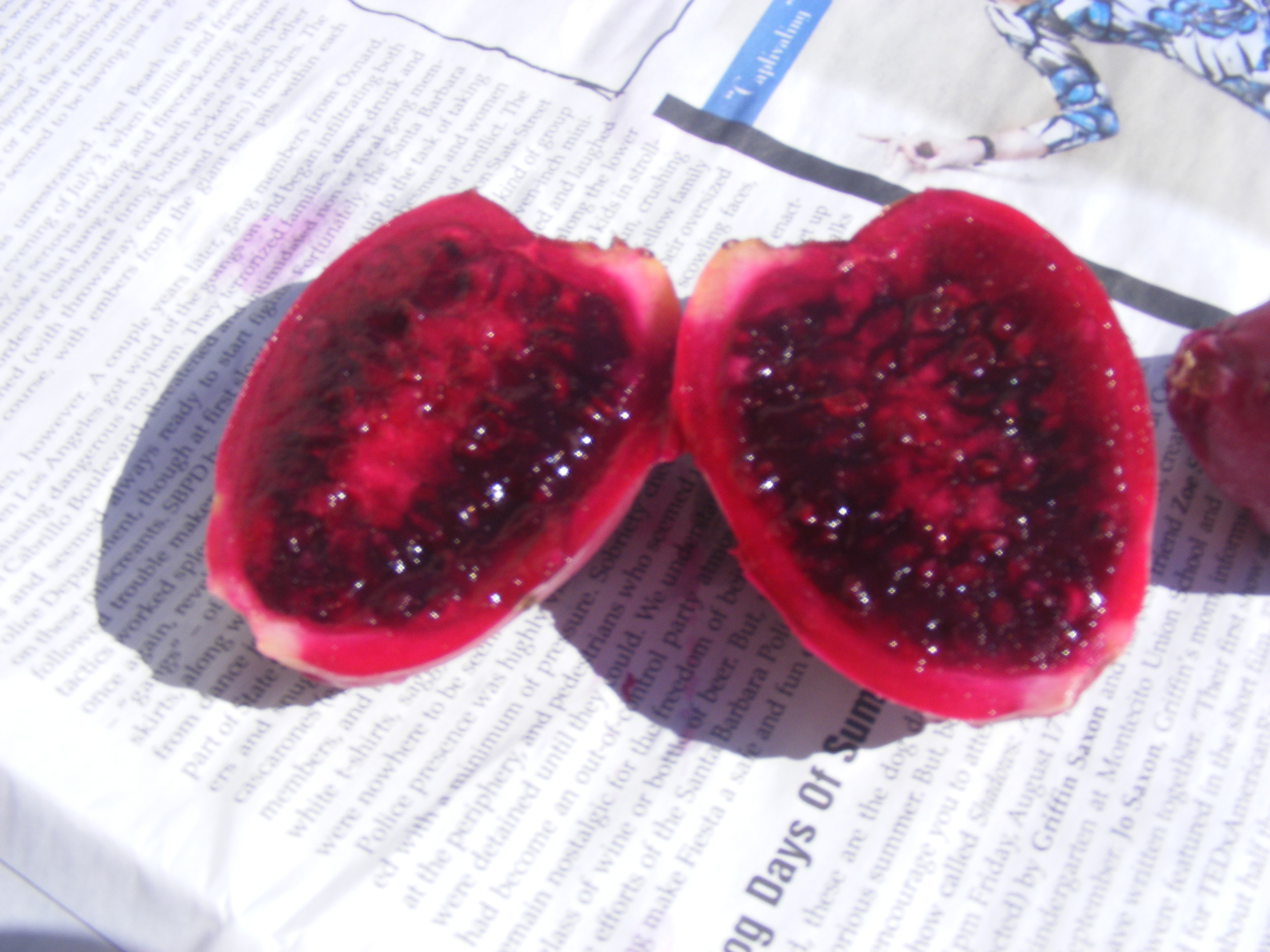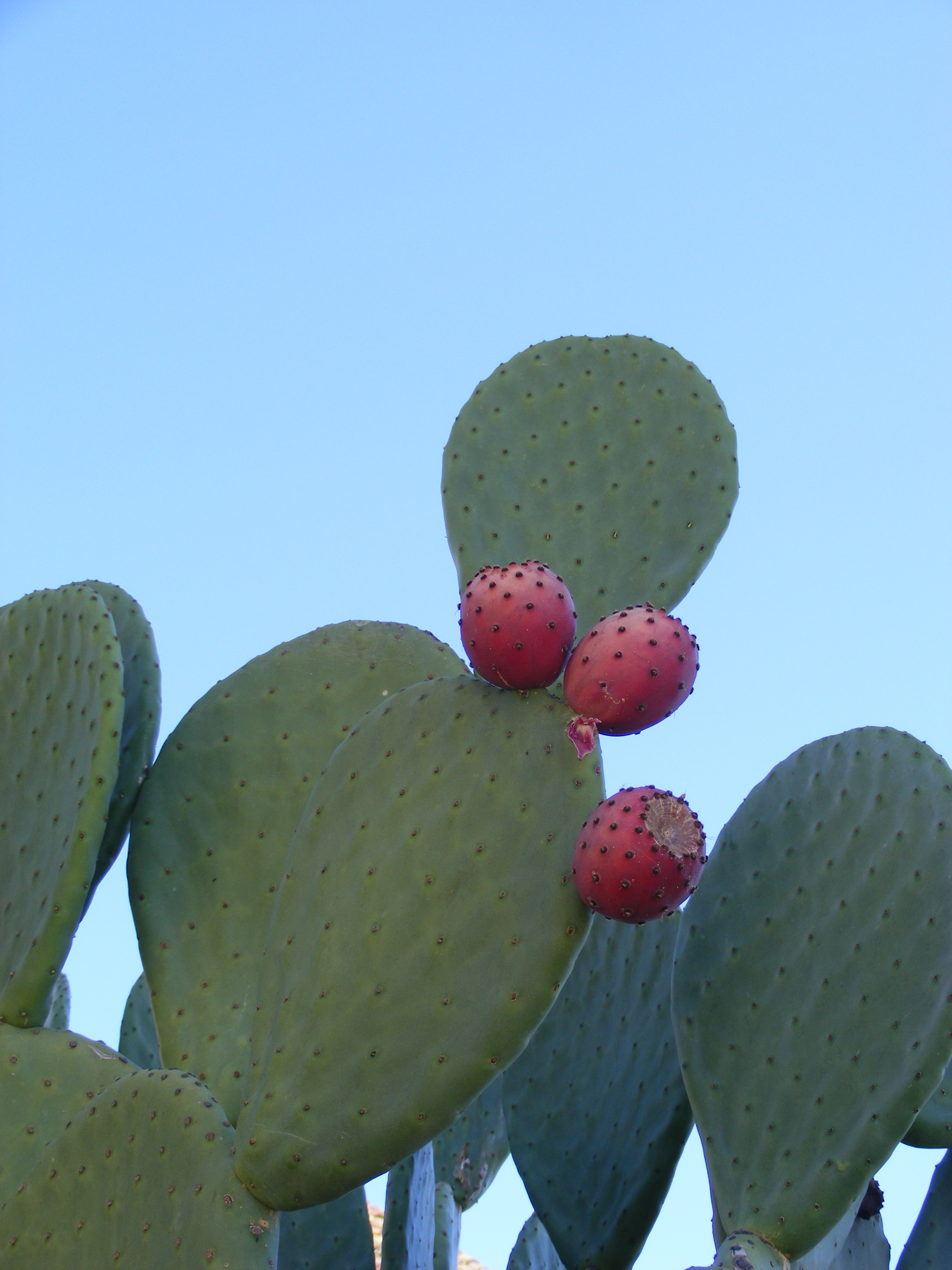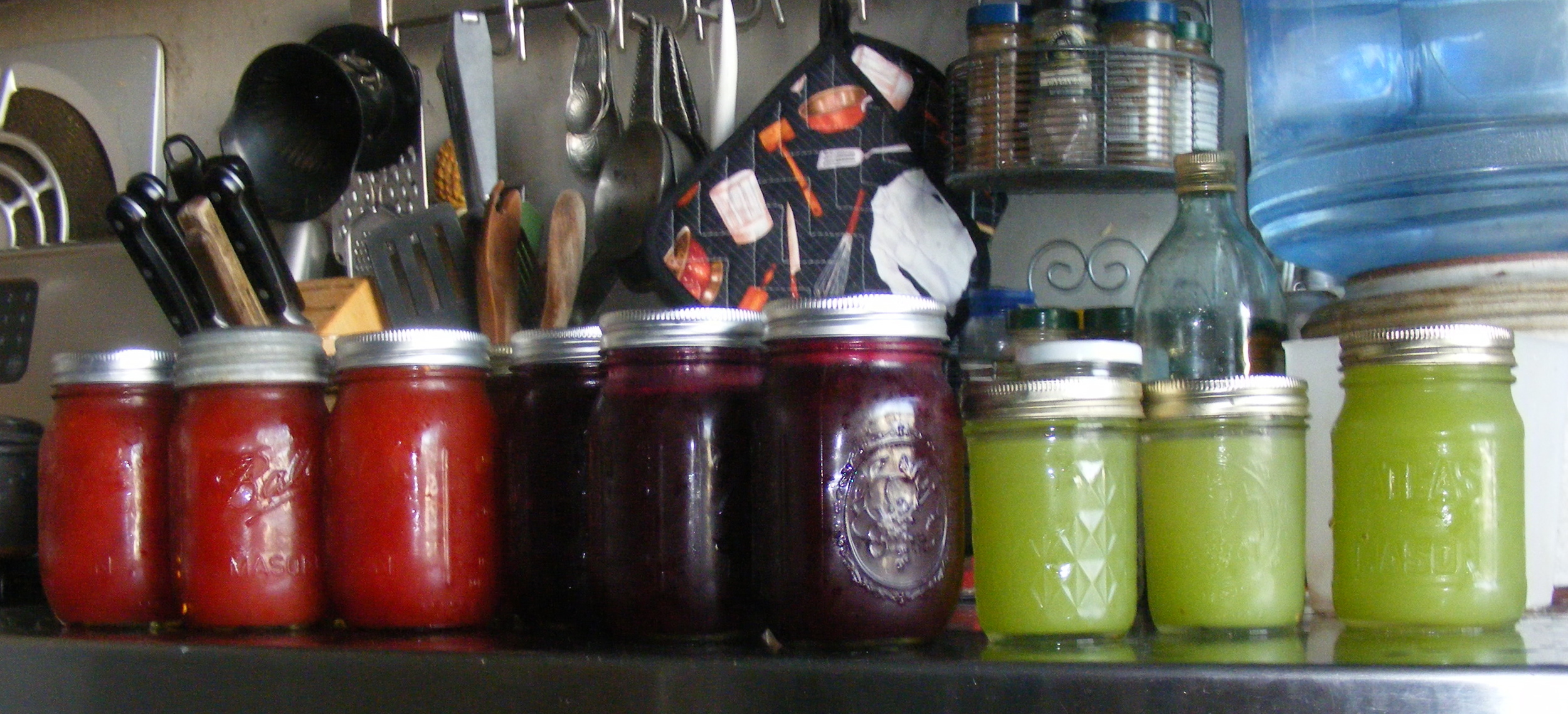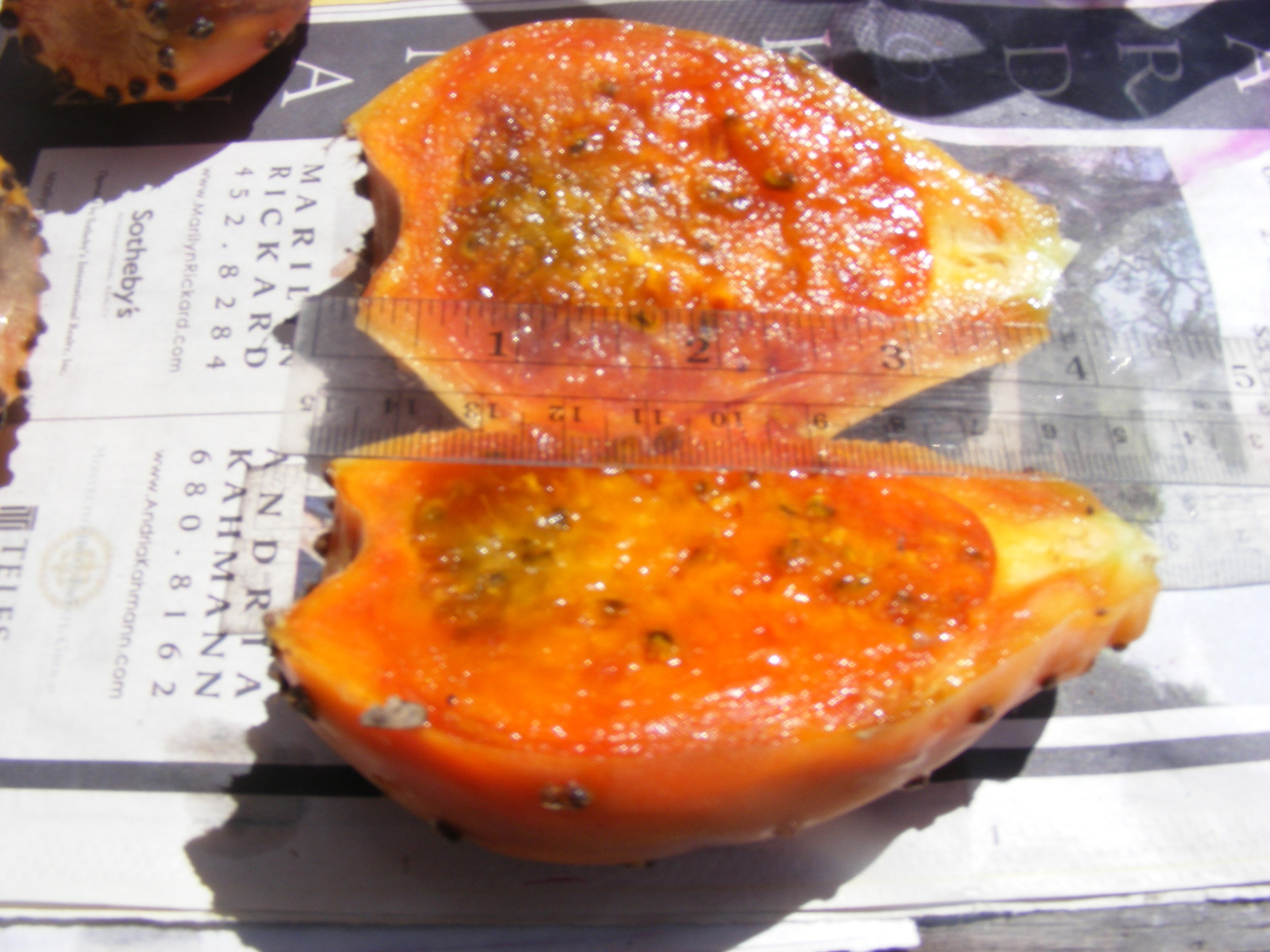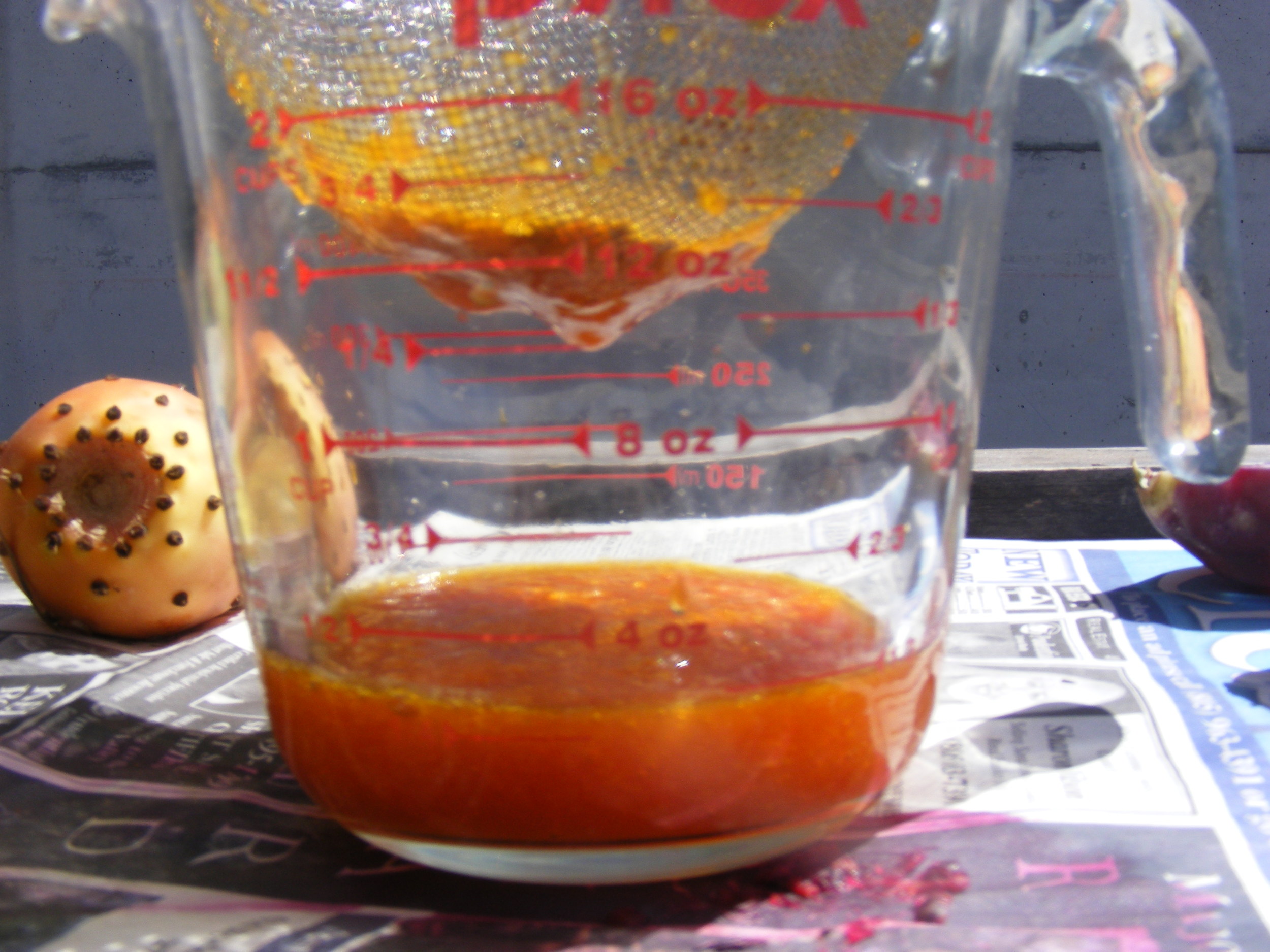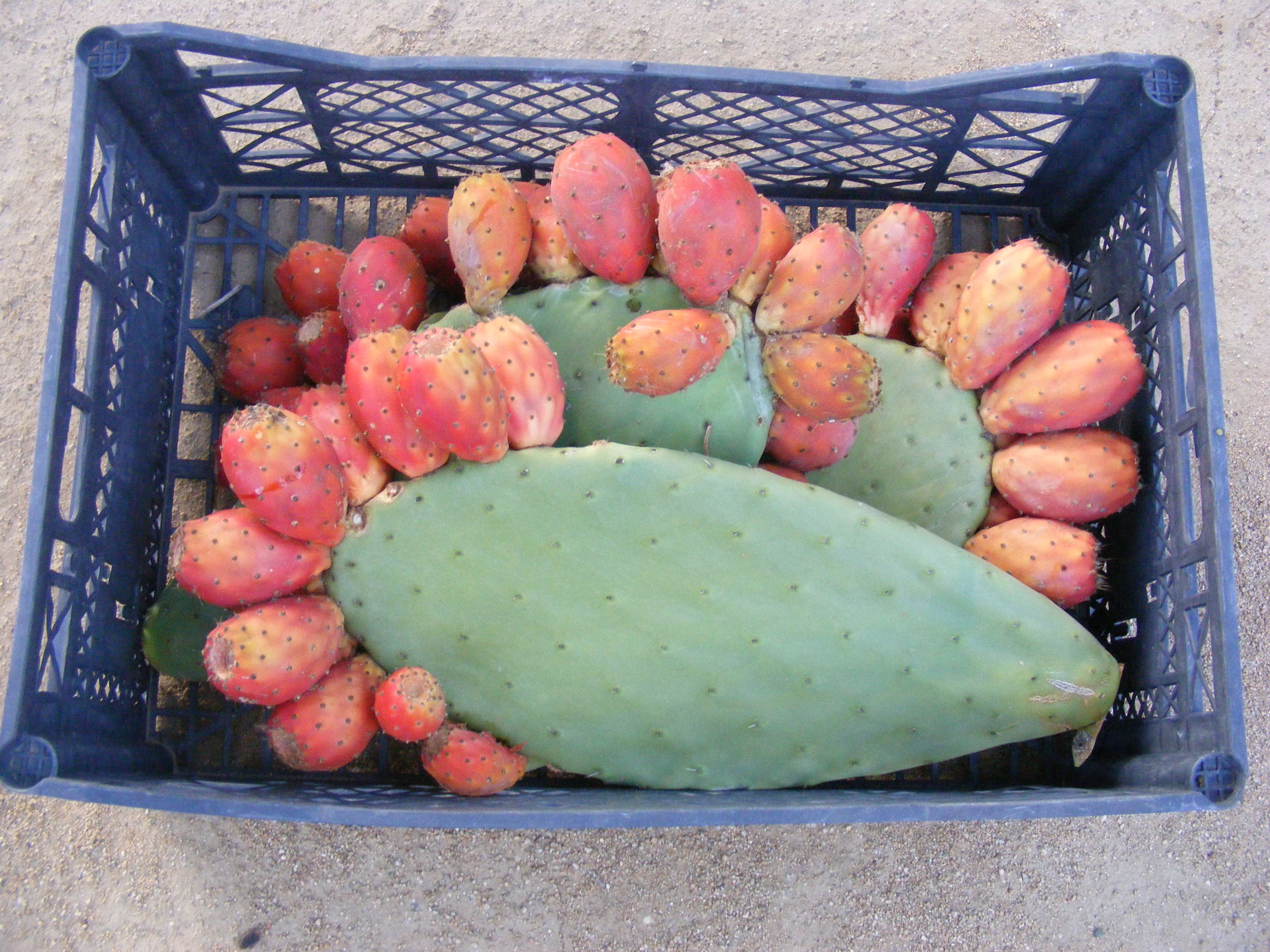Indian Fig Opuntia (O. Ficus-indica)
Prickly Pear, Tuna Cactus, Barbary Fig
Why Prickly Pear for Dryland Farming?
In times past in some environments such as Australia and South Africa they were considered a scourge, an invasive exotic. However, prickly pear fruit is revered in its homeland, Mexico, and is now highly esteemed in most of the known world. The Spaniards initiated its spread through Europe and Central and South America during their colonizing period and temporary conquest of Mexico. Here in modern day California we need not fear or doubt the vigor and promise of the Tuna cactus.
The Opuntias we offer are time proven performers here in California having survived and thrived along fence lines, roadsides and other forgotten or neglected places for fifty to a hundred years or more. They have remained healthy and productive on native rainfall alone with no care or maintenance. Growing these plants in a commercial or farm setting is not the difficult part of this crop. It is the spines (prickles) that challenge the handler and require some care and processing technology.
The Crop
Our focus at Drylands Farming Company is the juicy, highly colored fruit the plants produce although others might be equally keen on the young, immature new pads called Nopales, which are delicious, nutritious and medicinal (healing) food. The fruit can be juiced enjoyed fresh, frozen, dried or freeze dried or preserved as syrup or jam. The juice can also be fermented and distilled, producing a remarkable and distinctive spirit.
Not only is this fruit highly colorful, aromatic and sweet, it is very healthful. The Prickly Pear is gaining recognition as a super food being extremely high in antioxidants, essential vitamins, minerals, amino acids and other powerful phytonutrients. Anti-oxidant, anti-inflamatory, blood sugar balancer, great for the cardiovascular system and even a hangover cure! There is abundant information available on the health benefits and uses of the Prickly Pear.
The Opuntia provides an added benefit to the landowner as wildfire protection used in what we call “firescaping” a property. The Prickly Pear Cactus is virtually a standing wall of water or gel. The Opuntia provides no fuel and additionally when planted in a hedgerow creates a fire barrier.
For agricultural operations we recommend planting a number of different varieties for diversity and to prolong the harvest season. Please call or email for more information on our Prickly Pear varieties.
100 Year old Opuntia at Historical Rios-Caledonia Adobe In san Miguel, CA
Doug's Prickly Pear Margarita
2 oz. Silver Tequila
1 oz. Cointreau
Juice of one small lime (no bottled juice!)
1 Tbsp. Prickly Pear juice or puree, more if you want more Prickly Pear flavor, color, or hangover prevention
Fill glass with ice and and add to shaker with margarita ingredients. Shake well and serve!
We love starting with a lighter color prickly pear then adding a drizzle of a darker color juice to add complexity and visual impact.
Our Opuntia Collection
Doug has personally gathered the Prickly Pear varieties in our collection primarily over the course of the last 15 years but some as far back as forty years ago. He has collected from friends, neighbors and accommodating strangers, from along fence lines, hillsides, road sides and from old historic buildings.
Most of the parent plants from which pads were harvested for propagation were older and very well established plants that appeared to have been growing in their respective locations for a long time without any visible signs of care or irrigation, yet the plants were healthy, vigorous and also very productive.
The names we have assigned to each of the different cultivars are not official horticultural names. Some of these plants may have names already in Mexico or somewhere else but many of them may not. There is tremendous diversity in this collection of plants and each type brings a lot to the table in terms of desirable qualities. As a geographer it was natural for Doug to assign place based names to each variety in our collection but they are also somewhat descriptive. Where each plant was found and the color of the fruit are a start in knowing each type. The plant’s growth habits, size and form, the color of it’s pads, the overall productivity, whether it is early, mid or late season and the nature and quality of its fruit are all individualizing characteristics.We have sampled the fruit from all of the various cultivars many times and are familiar with their individual flavor profile, juiciness, sweetness, pulp texture as well as size, shape and color. We consider these plants to be true heirlooms, which not only provide healthy, delicious fruit but also do it reliably and consistently with minimal care.
